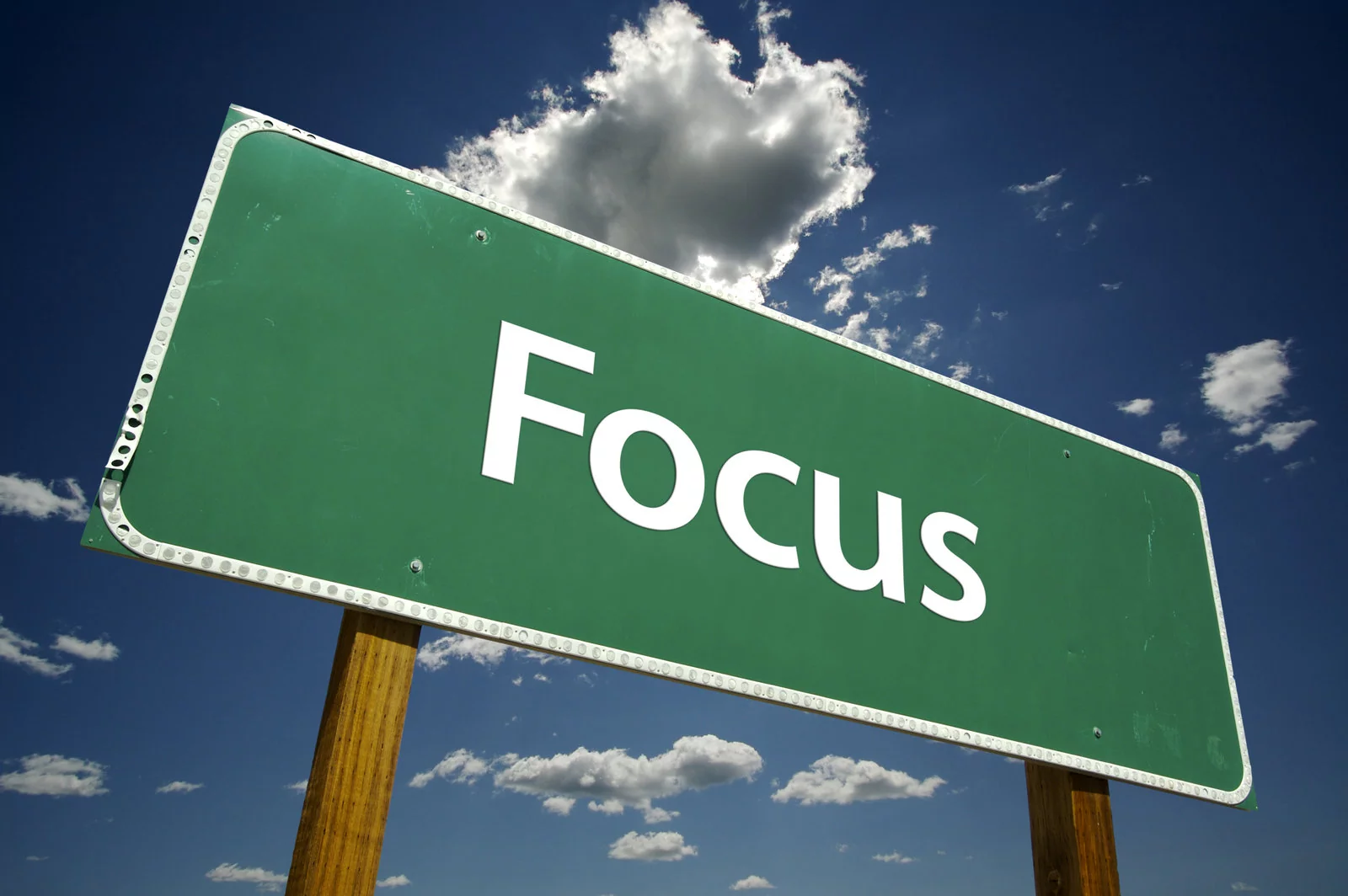One of the biggest problems home business owners face is how to stay focused. It all seems very simple. Sit down and do the work. If only it was as simple as that!
Since you created your workspace and integrated it into your home, and since every day seems to “bleed” into another, and you have started interacting more on social media, it’s getting harder to focus. As with any other job, working at home requires you to work on how to stay focused on your business. You will now know how hard this actually is!
It doesn’t seem to matter how many calls to action you see or hear, you seem to have the same problem. You get the feeling you’ll never be able to concentrate or get anything worthwhile done. This seems very dramatic, but there are solutions.

How To Stay Focused – Why Is It So Hard?
It is harder to stay focused working at home. There are a lot of distractions, like your friends coming over or maybe your favourite TV show on. And the lack of separation between your work and your personal life can be hard too. So it’s hard to stay focused when you’re working from home.
Spending the day being productive means a lot of things, but it also includes getting started on that work! Here are some ways to focus your energy to do just that.
How To Stay Focused – Set Intentions
The most useful thing to do when you sit down at your desk to work is first and foremost set a strong intention. It’s common for people like myself, who have the tendency of jumping from one task to another that is either probably useless or unrelated. An example would be answering non business related email.
How is this even possible?
These tasks are easy, which causes you to procrastinate on the work that is really meaningful to you. They often end up being a net negative. Hence more reasons to learn how to stay focused.
Setting a strong intention before you work helps you to avoid them, at least until the real work is done. Now, one useful way of setting intentions is to follow the Rule of Three.
Chris Bailey, author of “The Productivity Project,” makes an interesting suggestion for simplifying your daily plan: choose no more than three meaningful tasks you intend to accomplish. You might want to jot this idea down and incorporate it into your regular routine by placing the three biggest tasks at the top of the board and listing any less important ones after that.
It’s not a good idea to start your work session with low-priority tasks. You should always finish the most important projects first, since it can be too easy to get distracted and waste time if you don’t put your full effort towards what is most important.
If you’re going to task a single item, really commit to it. Reserve time for nothing else than that item so your intention will be clear and strong. It’s not enough in our cognitively filled world to imagine what it would feel like, or visualize the results of just one thing: put energy into clearly defining your intentions and taking steps to complete them.
There’s just no getting around it. And that has to do with how your brain is wired.

The human brain has evolved over millions of years to be highly sensitive to the environment and always aware of subtle changes. And while this has enabled the very survival of our species, it has also made a lot of people angry and been seen as a bad move.
When we start to multitask, our attention is divided up between different things. Even if we set a strong intention beforehand, it’s easy for us to get distracted when we’re trying to complete complex tasks.
Our brains have a natural resistance to work that taxes higher brain function. When this happens, we are more likely to find reasons unrelated to our work (or anything else for that matter) and focus on those instead.
Even when we’re not resisting difficult tasks, it is natural for us to be attracted to new things. I first noticed this when in school.
When I was a student, I used to carry chewing gum in my pocket to appease myself. Whenever I would get out a piece for myself, anyone who saw the pack of gum come out of my pocket stopped what they were doing and requested it be passed around.
The expectation of having a piece of gum has taken over everything in their mind. It’s like you are physically harming them if you refuse to share with them.
And yet, even before this exchange could happen, none of those classmates were thinking about chewing gum. It had never crossed their mind. In summary, there’s a novelty bias that makes us interested in things we can’t predict or experience before.
It’s why marketers and advertisers often talk about the AIDA framework, which lists Attention, Interest, Desire and Action in that order. This is the order of operations when we do things, even things like indulging in distractions.
Use this knowledge of human psychology to your advantage. If you know that being exposed to a distraction is going to make you want to waste the rest of your day looking at cat pictures, then there are two things you can do. First, avoid being distracted and second, if this fails remove the temptation altogether.
How To Stay Focused – Remove Distractions

Working from the comfort of your own home has some perks, but few come without drawbacks. It’s important to be aware of distractions and remove them before you start work in order to get things done efficiently.
Chris Bailey’s book, “Hyper Focus” breaks distractions into four different categories: under control or out of control and whether they’re fun or annoying.
No one enjoys distractions that come from people, noises or phone calls. You can’t control these things in advance, but when confronted you should try to stay on task and then return your focus as quickly as possible.
The distractions that you can control can be dealt with in advance.
Let’s start with your phone, because it’s probably one of the worst offenders.
Use features like Focus mode on Android or Screen Time on iOS to remove distractions. If you don’t need your phone, keep it out of arm’s reach. I often turn my phone to silent mode throughout the day and put it in another room or out of reach at least so as not to tempt myself.
Your computer is a huge distraction and the internet is mostly to blame. You should either disable your WiFi or unplug to disconnect it when you are not using it online.
Barring that, there is one rule that I highly recommend you follow.
Keep your email, Facebook Messenger, Skype and other messaging apps closed while working. These forms of communications are distracting both because they constantly come in with new messages or updates, but also you may feel pressure to respond back.
I have had this problem in the past, so I do my best to avoid it in the present. Previously, I would check messages and emails throughout the day as they came up. Now, I try not to look at anything until after work hours or only handle one task at a time.
Some people find the internet to be a distraction when working on their computer. A program called Freedom, which can be set up to block websites during prescheduled times of the day or during timed work sessions is very useful.
Now, I’m not going to spend a lot of time talking about apps here. But I recommend you do some online research and find an app that can help you focus. Apps like Focus Booster are really useful in breaking down your work into smaller chunks. For a long time it was my go-to for staying focused on the task at hand.
Think about whether or not any other forms of distraction are potential issues for you. For example, if game consoles and video games trigger distractions, put the power cords out of reach until after your work is done.
A distraction journal can be useful when struggling to finish a task. Whenever an event or occurrence pulls you away from your work, make note of it in the distraction journal so you can plan to eliminate this black hole next time.
How To Stay Focused – Breaking Down Resistance
Now, first take care of distractions and the next step is to get rid of mental barriers. The worst thing you can do at this point is dwell on problems without attacking them head-on. Whatever you do in your life, it’s important to always keep moving. Always keep taking action. Start by setting a small goals for yourself.
One study revealed that people who feel high levels of anxiety towards mathematics show increased brain activity. This activity was found in regions of the brain that deal with threat detection and physical pain.
Certain parts of our brain view difficult, mentally taxing tasks as something undesirable and similar to touching a hot stove. When you first start the task, that aversion is at its strongest. But with practice, once you get into a rhythm, the resistance diminishes.
To make a long-standing task feel less daunting, you need to just get started and this resistance will go away.
The first step for achieving your task list is to focus on the individual tasks. Earlier, we discussed focusing on three meaningful tasks (one at a time) per day and setting an intention.
If you find it difficult to accomplish larger tasks, break them down into smaller ones. For example, when writing a blog post, I don’t set out to fill the whole thing at once. Instead, I create multiple subheadings based on an outline and then pick one to write up during a single sitting.
When I start writing, it is not my intention to write more than one section at a time. Sometimes I manage to do more than one section in a session, which is great.
Secondly, set a timeframe for the work and make it short enough that you no longer feel resistance.
If 30 minutes feels too overwhelming, go with 15. Set your timer for whichever time you choose, or use an app. Removing this external pressure by using a timer can be helpful when you’re working on developing internal self-control. This will help to keep you laser focused on your task.

How To Stay Focused – Conclusion.
Now you’re all set with the tools and principles on how to stay focused, you’ll be able to get right down to business.
To conclude I would like to show you exactly how I do it:
First, I will look at my top three intentions, that I have written down, separately from other smaller tasks. And if each of these is too big for a single work session, I will choose part of one and set my intention based on that.
Next, I choose how long I’m going to work. That is usually for 30 minutes a time and then a short break.
For writing or for doing research, I block everything out. The blocks include email, all social media, and any busywork sites like Google Analytics, which can be a pretty big distraction for me.
Every day, I’ve removed all distractions before starting my task and given myself a break by setting an intention to work for a specific time on each task. These few things help me stay focused and productive. I make these changes because logically, it all makes sense!
Once you break down the bigger problem into smaller, easier to solve problems, it becomes far more manageable.
These quick actions neatly take care of these problems. Most problems are like this. They can be broken down into smaller parts, which will lead to solutions that work. And figuring out how to do this is a skill you learn with practice.
I hope you have found this post on how to stay focused when working at home useful. If you have, please comment below and share.












